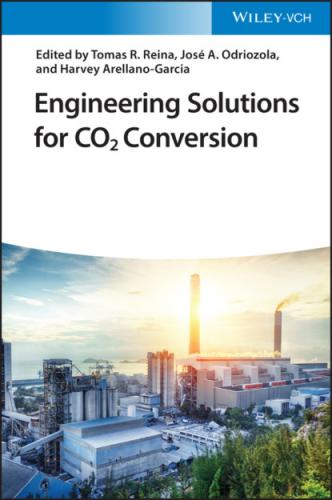1.2.2 Pre‐combustion
Pre‐combustion systems can be applied to natural gas combined cycles (NGCC) or integrated gasification combined cycle (IGCC) (Figure 1.1), where a syngas, comprising mainly CO and H2, feeds a gas turbine (GT) combined cycle system to produce electricity. The potential advantages are higher conversion efficiencies of coal to electricity and cheaper removal of pollutants [8]. The syngas, based on the water shift reaction, can be converted into CO2 and H2O. This mixture is typically separated with physical solvents (as described in Section 1.2.4), membranes, or sorbents. However, hybrid technologies can also be used. Depending on the technology, further post‐treatment would be needed to avoid degradation and loss of efficiency.
The main theoretical advantage of pre‐combustion is the production of hydrogen, which will add value to the business model, and a lower energy penalty compared to using the traditional chemical absorption within a post‐combustion configuration. However, large projects demonstrated that this difference is only 1–2%, as reported by National Energy Technology Laboratory (NETL) [9].
The most notable pre‐combustion project was the Kemper County IGCC plant in the United States, which stopped its operation in 2017.This demonstration facility would place this arrangement at high TRL, while other testing campaigns would reach up to a TRL of 6.
Figure 1.1 Diagram of pre‐combustion capture for power generation in IGCC.
Source: Adapted from Jansen et al. [72].
1.2.3 Oxyfuel
In the oxyfuel process, the air is split into nitrogen and oxygen, generally using an air separation unit (ASU), for the combustion of fuel with nearly pure oxygen. The consequence is a higher flame temperature and a highly concentrated CO2 stream (60–75%, wet and might contain impurities and incondensable components) that can be further purified to meet the final use specifications. The CO2‐rich gas is typically recirculated to manage the unstable flame and its high temperature. Nowadays, the progress on oxyfuel combustion is focused on the reduction of air separation costs and the enhancement of process configuration to reduce capture costs. Further information can be found, for example, in Ref. [10]. Based on the current progress, the most advanced arrangements can be assessed as TRL 7.
An advanced oxyfuel process, called the Allam cycle (Figure 1.2), is being tested at large scale as part of the NET Power project in the United States [4]. This involves oxyfuel combustion and a high‐pressure supercritical CO2 working fluid in a highly recuperated Brayton cycle, aiming to reduce CO2 capture costs and prove stable operation. Based on that, there is a potential to progress to a TRL of 7 once the facility is fully operational.
1.2.4 Post‐combustion
Post‐combustion refers to the group of technologies able to separate CO2 from the flue gas emitted during the fuel combustion and/or other reactions in the industrial sector. This indicates that those systems are mainly installed as additional equipment downstream in new plants or during the retrofitting of the existing facilities. The latter represents the main advantage of post‐combustion technologies compared to pre‐ or oxy‐combustion, as a fundamental redesign or complex integration with the existing facilities would be minimal.
Figure 1.2 Process schematic of a simplified commercial scale natural gas Allam cycle.
Source: Adapted from Allam et al. [4].
1.2.4.1 Adsorption
Adsorption refers to the uptake of CO2 molecules onto the surface of another material. Based on the nature of interactions, adsorption can be classified into two types: (i) physical adsorption and (ii) chemical adsorption. In physical adsorption, the molecules are physisorbed because of physical forces (dipole–dipole, electrostatic, apolar, hydrophobic associations, or van der Waals) and the bond energy is 8–41 kcal mol−1, while in chemical adsorption, the molecules are chemisorbed (chemical bond; covalent, ionic, or metallic) and the bond energy is about 60–418 kcal mol−1 [11].
A theoretical advantage of adsorption against other processes is that the regeneration energy should be lower compared to absorption because the heat capacity of a solid sorbent is lower than that of aqueous solvents. However, other parameters, such as working capacity and heat of adsorption, should also be considered [12]. The higher the heat of adsorption, the stronger the interaction between the CO2 molecules and adsorbent‐active sites and thus the higher the energy demand for the regeneration. The potential disadvantages for adsorbents include particle attrition, handling of large volumes of sorbents, and thermal management of large‐scale adsorber vessels.
Solid sorbents can be classified according to the temperature range where adsorption is performed. Low‐temperature solid adsorbents (<200 °C) include carbon‐based, zeolite‐based, metal–organic framework (MOFs)‐based, several alkali metal carbonate‐based, and amine‐based solid adsorbents. Intermediate‐temperature (200–400 °C) solid adsorbents include hydrotalcite‐like compounds or anionic clays, while high‐temperature (>400 °C) sorbents refer to calcium‐based adsorbents and several alkali ceramic‐based adsorbents.
Usually, adsorption takes place in packed or fluidized beds, as can be seen in Figure 1.3. For the packed bed case, the adsorbent is loaded into a column, the flue gas flows through the void spaces between the adsorbent particles, and CO2 gets adsorbed onto the surface of the particles. In fluidized beds, the flue gas flows upward through a column above the minimum fluidization velocity and the adsorbent particles are as such suspended in the gas flow. Regardless of the process configuration, the adsorbent selectively adsorbs CO2 from the flue gas and is subsequently regenerated to complete the cyclic adsorption process.
Figure 1.3 The adsorption process: (a) difference of physisorption and chemisorption, (b) a packed bed configuration, and (c) a fluidized bed configuration. Source: Adapted from Global CCS Institute (https://www.globalccsinstitute.com/archive/hub/publications/29721/co2-capture-technologies-pcc.pdf).
Cyclic adsorption processes alternate between the adsorption and desorption modes of operation. Based on the intensive variable that is cycled, the adsorption processes are broadly classified as pressure swing adsorption (PSA) or temperature swing adsorption (TSA), as can be seen in Figure 1.4. If the cycle switches between adsorption at atmospheric pressure and desorption under vacuum,
